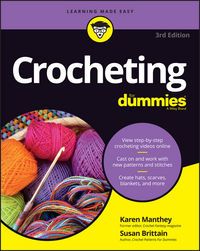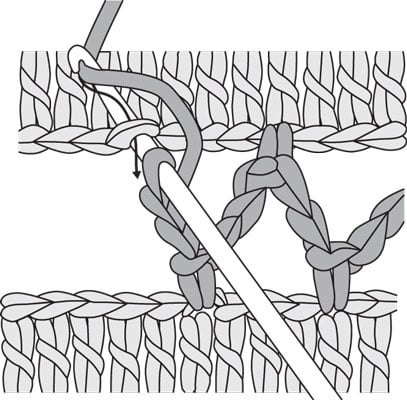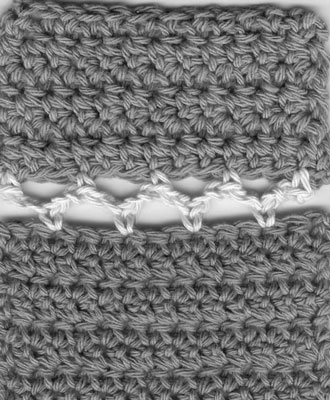You can use this joining method to connect motifs when making a shawl, to add interest to the side seams of a garment, or to join panels when crocheting an afghan.
To crochet a joining row that's a chain-2 space wide:
- Lay the pieces side by side on a flat surface, matching stitches across the adjacent edges that you're going to join.
- Insert your hook under the top 2 loops in the designated stitch on the first piece, chain 1 (ch 1), single crochet (sc) in the same stitch, and then chain 2 stitches for the joining row.
- Insert your hook under the top 2 loops of the designated corresponding stitch on the second piece, yarn over (yo), and pull the yarn through the stitch.
- Yarn over, draw the yarn through the 2 loops on your hook, and single crochet the stitch complete.
- Chain 2, insert your hook under the top 2 loops of the designated stitch on the first piece, yarn over, and pull the yarn through the stitch.
- Yarn over and draw the yarn through the 2 loops on your hook.
- Chain 2; then repeat Steps 3 through 6 across the row to the ending point designated in the pattern.
- Fasten off and weave in the ends with the yarn needle. Check out the following figure to see a completed seam made with a row of stitches.



